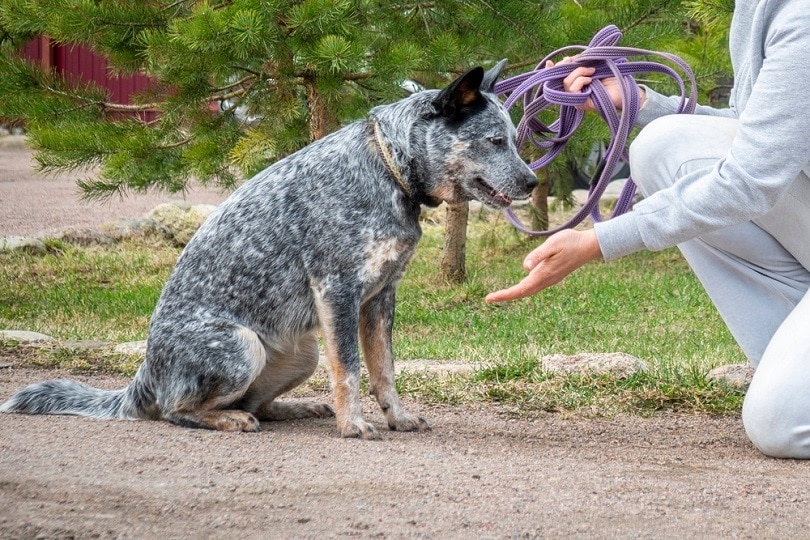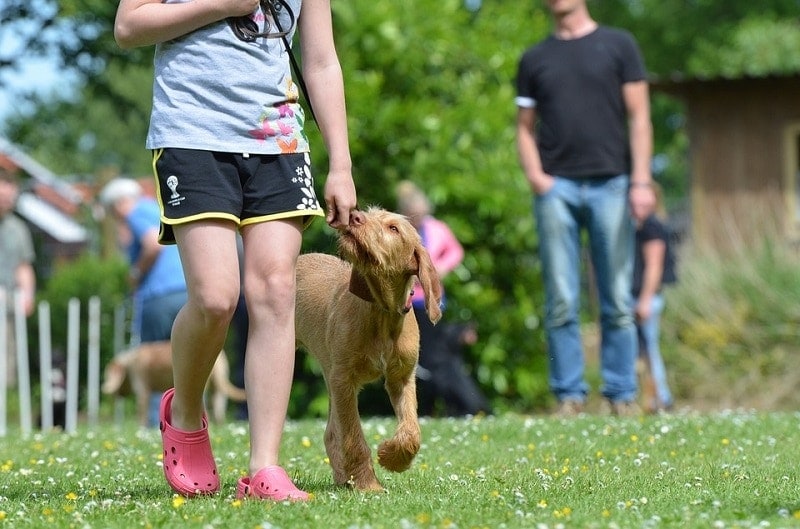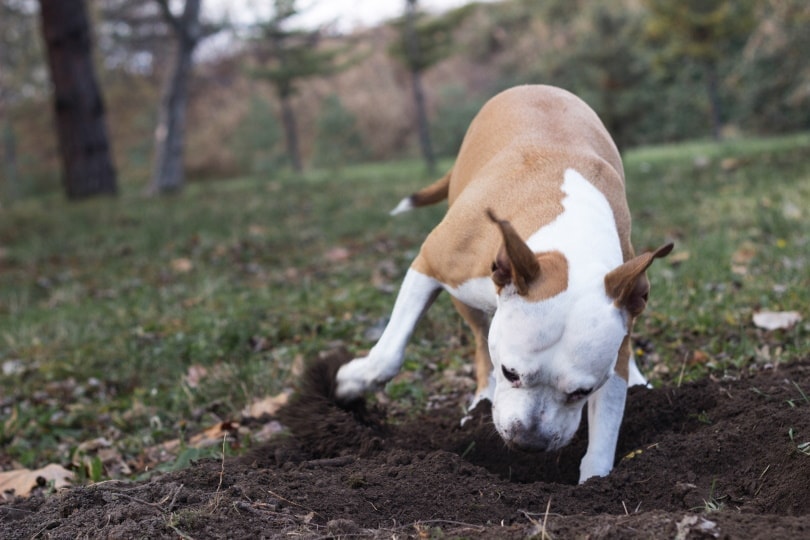How to Teach Your Dog to Spin in 5 Simple Steps

Updated on

Do you want to teach your dog how to spin? It’s a fun trick that can be learned relatively easily, and it’s a great way to keep your pet entertained. In this blog post, we will outline 5 simple steps that will help you teach your dog how to spin. Let’s get started!
The 5 Simple Steps to Teach Your Dog to Spin
1. Use a Treat to Teach Your Pet the Motions

Start with your dog in a sitting position. Have a treat ready and hold it in front of their nose so they can smell it. Slowly start moving the treat around their head in a circular motion. As you do this, say the word “spin” or “turn” in a happy voice. As your dog starts to follow the treat with their nose, slowly start moving your hand away from their head.
2. Repeat the Process Several Times
Eventually, your dog should be spinning in a circle as they try to keep the treat in front of their nose. When they do this, give them the treat and lots of praise. Repeat this process several times a day for a few days until your dog is consistently spinning when you give the cue.
3. Add Additional Cues

Once your dog is spinning on cue, start adding in additional cues such as “spin faster” or “spin slower.” If your dog starts to get bored with the trick, you can mix things up by using different types of treats or adding in a verbal cue before the hand signal.
4. Phase Out Treats
Once your dog is spinning consistently on cue, you can start to phase out the treat rewards. Instead, give them praise or a petting as a reward for completing the trick.
5. Try New Variations

As your dog becomes more proficient at the trick, you can start to add in different variations. For example, have them spin in a circle and then sit down, or have them spin three times before stopping. Remain consistent with your cues and rewards, and have patience while your dog learns this new trick. With a little practice, they’ll be spinning like a pro in no time!
Dog Training Tips and Tricks
Now that you know how to teach your dog to spin, put these tips into practice and have some fun with your furry friend! Here are some of our best dog training tips:
- Be consistent with your cues and rewards
- Practice the trick several times a day
- Get creative with different variations
- Have patience as your dog learns
Choosing the Perfect Training Treats
When it comes to choosing the perfect training treats, there are a few things you’ll want to keep in mind.
- Consider what type of treat your dog likes best. Some dogs prefer softer treats while others like crunchy ones.
- Make sure the treat is small enough that your dog can eat it quickly and easily.
- Choose a treat that motivates your dog to learn. If they aren’t interested in the treat, they won’t be motivated to do the trick.

Dog Training FAQ
Q: My dog is having trouble following the treat with their nose. What should I do?
A: If your dog is having trouble following the treat, try moving it slower or in a smaller circle. You can also try using a higher-value treat to get their attention.
Q: My dog gets bored easily when doing tricks. How can I keep them interested?
A: If your dog gets bored easily, try mixing up the rewards you use or adding in verbal cues before the hand signal. You can also try different variations of the trick to keep them engaged.
Q: My dog isn’t responding to the cue “spin.” What should I do?
A: If your dog isn’t responding to the cue “spin,” make sure you are being consistent with your cues and rewards. You can also try using a different cue such as “turn” or “twirl.”
Q: My dog is having trouble spinning in a circle. What should I do?
A: If your dog is having trouble spinning in a circle, try starting with a smaller circle and gradually increasing the size. You can also try luring them with the treat to get them to turn around.
Q: My dog is getting dizzy from spinning. What should I do?
A: If your dog is getting dizzy from spinning, try slowing down the speed or having them spin for a shorter period of time.
Q: My dog isn’t responding to the treat. What should I do?
A: If your dog isn’t responding to the treat, try using a higher value treat or moving it slower in a circle. You can also try holding it closer to their nose so they can smell it.
Q: My dog keeps getting distracted when we’re practicing. What should I do?
A: If your dog keeps getting distracted, try using a higher value treat or adding in verbal cues before the hand signal. You can also try practicing in a quiet room with no distractions. A very important part of your dog training is their attention and you might want to consider working on it first before trying to train any trick.
Q: My dog still isn’t getting the trick. What should I do?
A: If your dog still isn’t getting the trick, remain consistent with your cues and rewards, and have patience as they learn. You can also try breaking the trick down into smaller steps or using a different variation.
Q: Are some breeds easier to train than others?
A: Some breeds, such as herding dogs and working dogs, are typically easier to train than others. However, all dogs can be trained with patience and consistency.
Q: How long does it take to train a dog?
A: It depends on the individual dog and the trick being taught. Some dogs learn quickly, while others may need more time. Be patient and consistent, and your dog will learn in no time!
Q: How often do I need to practice with my dog?
A: It depends on the individual dog and the trick being taught. Some dogs learn quickly, while others may need more time. Be patient and consistent, and your dog will learn in no time!
Q: Do I need to hire a professional trainer?
A: No, you don’t need to hire a professional trainer. You can train your dog yourself with patience and consistency. However, if you’re having trouble teaching your dog a particular trick, you may want to seek out professional help.
The Bottom Line
Teaching your dog to spin is a fun trick that can be learned in just a few simple steps. With patience and consistency, you’ll have them spinning like a pro in no time. Just remember to use high-value treats and break the trick down into smaller steps if needed. Don’t forget to get creative with different variations and rewards to keep your dog motivated. And most importantly, have fun!
See also:
- How to Teach a Dog to Sit Pretty in 5 Simple Steps
- How To Teach Your Dog To Skateboard in 6 Simple Steps
Featured Image Credit: Maya Shustov, Shutterstock













